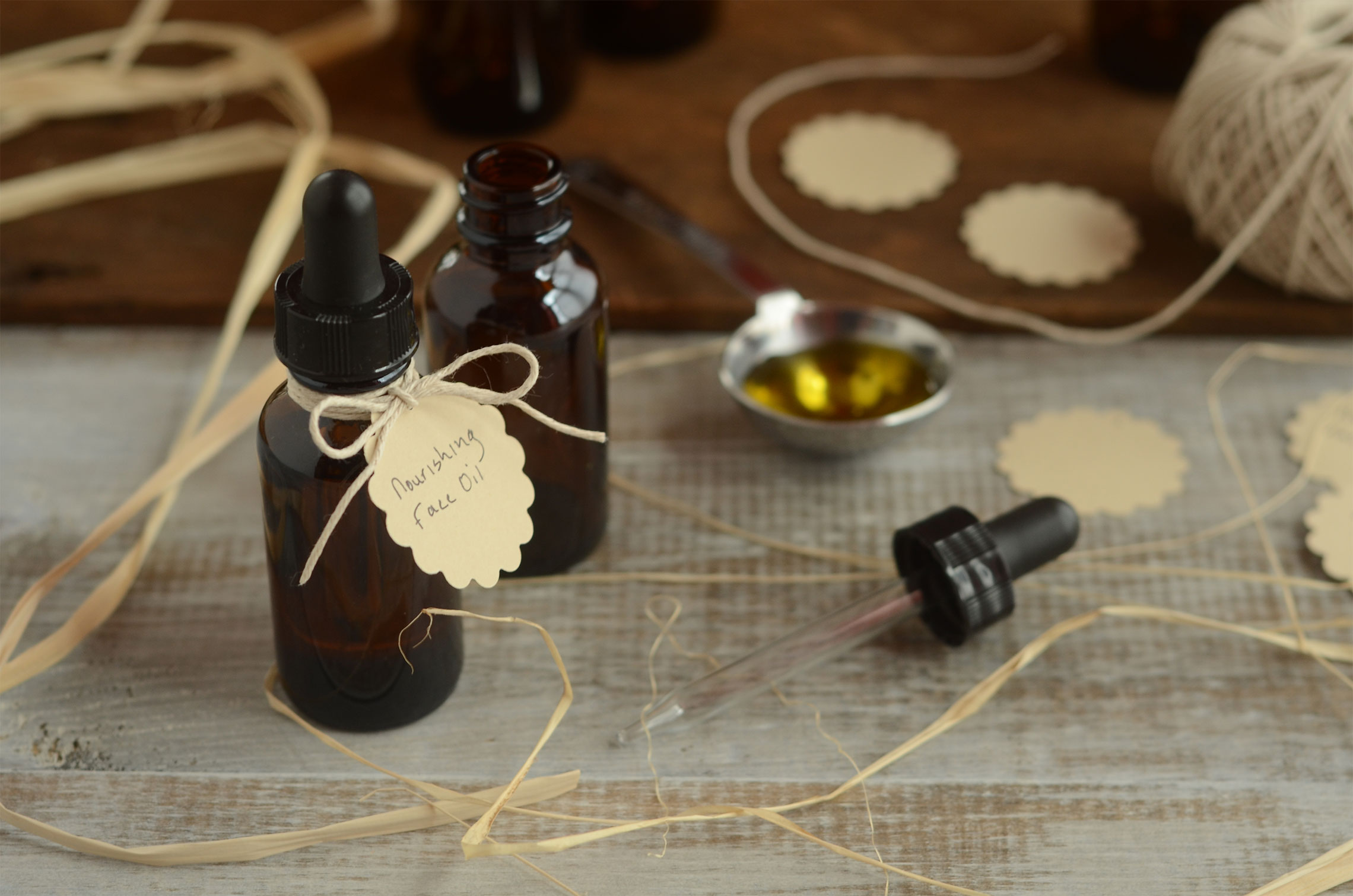Did you know that Vimergy tincture bottles can be taken apart and sorted separately for glass, plastic and rubber? Plus, you can let your imagination fly and give your jars a new life by using empty jars as flower vases or storing buttons, seeds or other goodies in larger plastic containers. In this way, recycling is both practical and exciting. If you would like to know what and how to do with the empty jars and how to contribute to recycling, be sure to read the rest of the post – you might find some good ideas to put in your ears here!
In this post, we’ll talk more:
- Why reuse at all;
- How you can contribute to recycling;
- What to do with empty plastic bottles and which plastics can be recycled;
- How Vimergy can give empty bottles and cans new life;
- BOONUS: how to turn food waste into black gold
Let’s start at the beginning – why is waste sorting and recycling so important?
Through recycling, each and every one of us can contribute to a cleaner living environment and a cleaner environment. When we act together, one small step can become a big, effective step that makes a real difference. But to see change, reuse should become a matter of common concern. It is therefore very important to pay attention to this today.

How to start recycling?
While recycling and sorting waste may seem like a tedious and time-consuming extra chore, it is actually not that time-consuming or complicated. Nowadays, the whole process has been made very simple and convenient, and you don’t even have to search far for containers. In general, changing habits tends to be the hardest part, but once you’ve made the decision and taken the first step, everything goes smoothly. We believe the same is true for sorting and recycling – once it becomes a habit, it no longer feels like a chore, but instead gives you a good feeling of having done something for the environment. But how do you get started?
Ensure that no recyclable packaging or materials are thrown away with your household waste.
When the plastic or glass packaging becomes empty, do not throw it together with the fruit and vegetable peelings in a compost pile, but store them separately and, if possible, place them in appropriate containers.
In fact, a very large proportion of the waste that ends up in landfills can either be recycled or recycled again. The problem that waste handlers face is that all the different types of materials, packaging, compost and other waste are all mixed up in the same container.
In order for the material to be recycled, one type of material must be sorted separately. A relatively simple matter for the average consumer and business, but very complex and costly for a sorting plant.
Packaging that could be recycled but is dirty or mixed with other materials often finds its way to landfill.
Sorting is simple in principle
In fact, getting into the habit of sorting is quite simple. Even children know how to do it properly in nursery school and set an example for their parents.
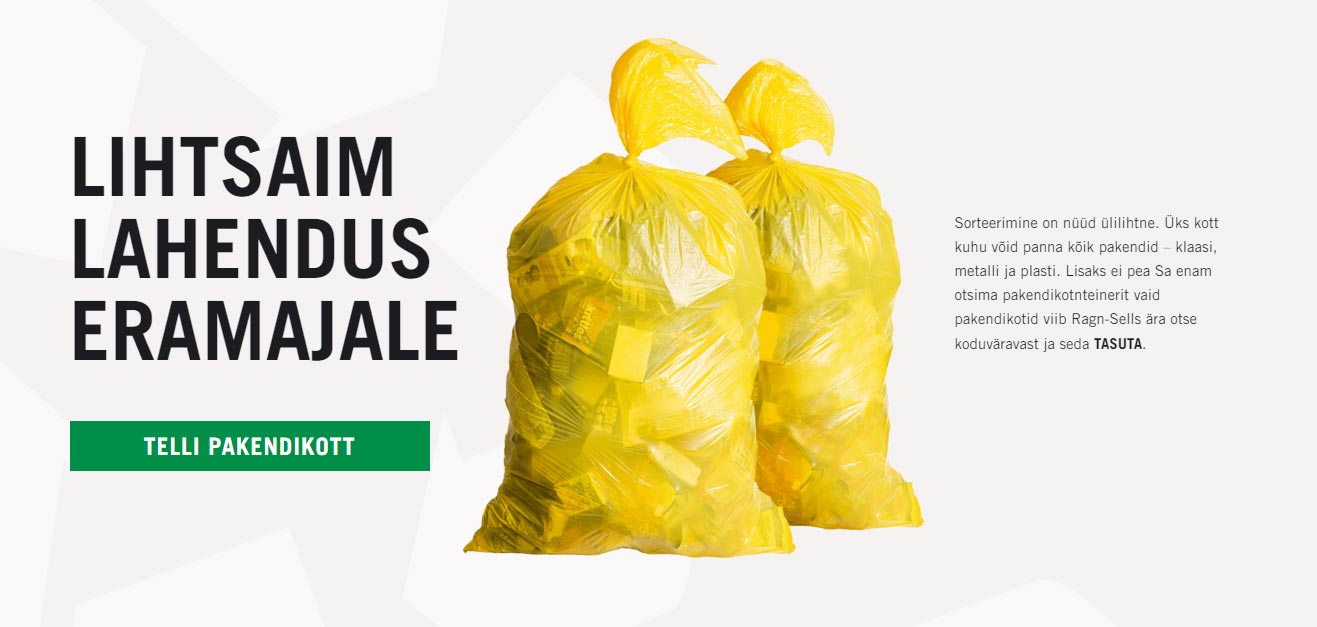
Sorting solution for private houses from Ragn Sellsi
To make sorting even smoother, Ragn Sellsi has created a convenient packaging bag solution for private home owners. Just collect all your packaging (glass, metal and plastic) in one bag, put it in the yard on the right day, and the collection truck will take it away free of charge . All you have to do is collect. Read more about the packaging bag service here.
There are also usually several different containers in the yards of apartment buildings to help with sorting.
In addition, in areas of higher population density, there are likely to be different container solutions. I believe there is one near your home. This seemingly small step towards a container shows a positive attitude towards the well-being of the planet and helps to steer human activity towards a circular economy. Bequeathing a beautiful, clean and balanced world to our children’s children should be a shared priority for all humanity.
The decisions we make today must create a world that is sustainable for seven generations to come. Decisions on energy, water and natural resources must not complicate the lives of future generations.
The Haudenosaunee life philosophy of the North American tribe of Haudenosaunee : the 7 generations principle
Start sorting today
Don’t put off this important decision until tomorrow, start today. Take a small inventory of your home and see how much and what kind of packaging your family produces over a period of, say, a month – you might be surprised! This will help you to set a plan for how to collect different types of packaging, whether and how to use them, and how to recycle them conveniently.
Which plastics can be recycled?
You’ll probably find that most of the rubbish is some form of plastic. Some glass and metal packaging too.
You may or may not have also noticed that plastic packaging usually has a recycling mark on the top, with a number inside. What does this number indicate?
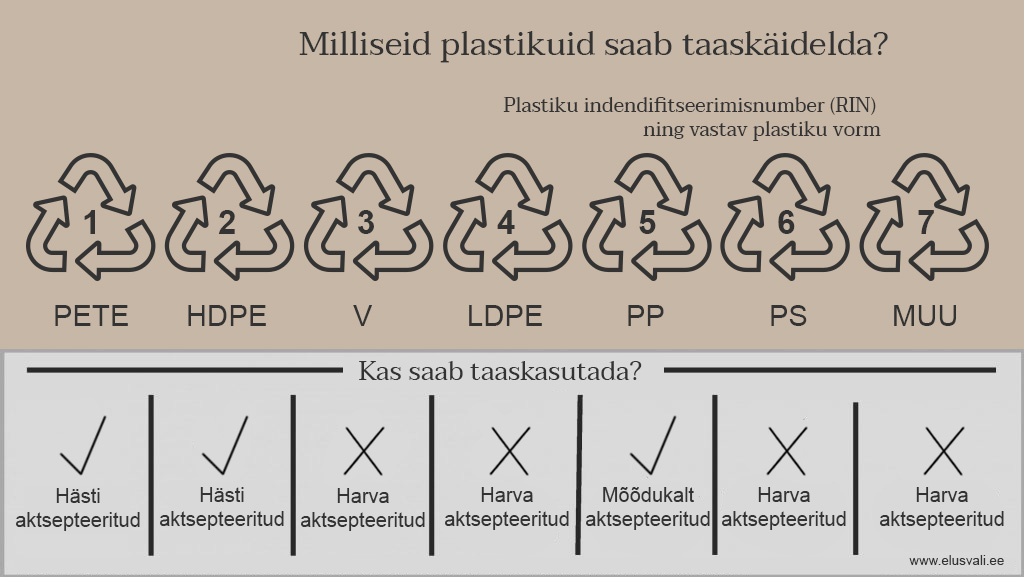
This is the RIC(Resin Identification Code ) number, which today is assigned from one to seven. 1, 2 and 5 are recyclable and most sorting stations can handle them well.
All Vimergy plastic tops, such as L-Lysine or Glutathione, also come in recyclable packaging. On Vimergy plastic packaging, you can find the numbers 1 and 2 inside the recycling mark. This means that PETE and HDPE plastics are used in the manufacture of the packaging. These types of packaging are widely used in the food industry. You can read more about plastic labelling and the safety of different types of plastic here.
All Vimergy plastic tops are suitable for packaging waste. Rinse out any dirty containers, such as spirulina or barley grass juice powder. You can use the green water from the rinsing process as fertiliser!
Before you throw your packaging in the bin, maybe you can give it a new lease of life at home.
Keeping all of them is of course difficult, but why not find a new use for some of them. If you’re a craft fan, larger jars – Lysine, Micro- C or Spirulina – are ideal for storing buttons or thread rolls, for example. Smaller ones, however, can be filled with loose seasonings, herbs, spices or purée. But they are also suitable for pen holders, planting plants or even as garage screw tops. Plus, you can customise the jars and stick new labels on them – so you don’t have to throw all the jars away, and there’s plenty of excitement too!
But how do I sort tinctures in a Vimergy glass bottle?
All Vimergy tincture bottles are designed so that they can be taken apart after use, separating the glass, plastic and rubber. This way, you don’t have to throw plastic and glass in the same container and you can take a more environmentally friendly approach.
Or even if you have one bag for all your packaging, it is easier to sort it further at the sorting station.
Separating the different parts is a breeze – simply unscrew the cap and pipette from the bottle, remove the glass pipette from the cap, and then pop the rubber pipette tip out of the plastic cap. It’s all very easy and only takes a moment, but it plays an important role in the big picture.

By opening the pipette in this way, you can also clean the pipette and use it, for example, to give young children freshly squeezed juice – celery juice, orange juice, or similar.
Give new life to empty bottles
Empty tincture bottles are great for making various (Christmas) decorations and lights, as well as small flower vases. They can also be repainted and used to create unique decorative elements for a table or shelf. If you love natural cosmetics and often make your own fragrances or home fragrances from different essential oils, then empty tincture bottles may be just the thing for storing oil blends. This way, creative recycling can become your new hobby!
Glass jars can also come in handy when crafting with slightly older children.
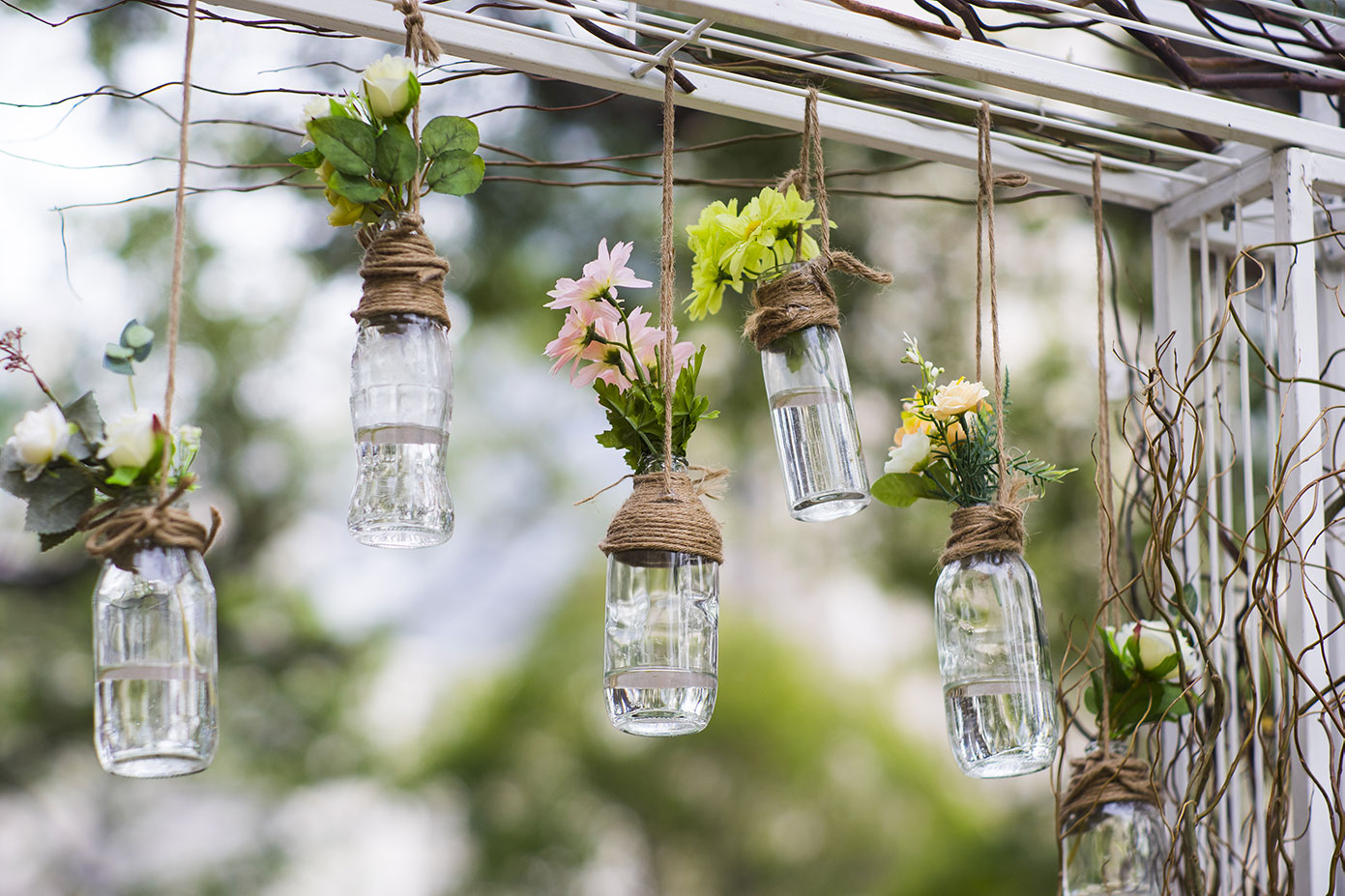
It pays to compost food waste
Composting isn’t rocket science, but different regulations and a stinky pile don’t tempt many to try it. But there are also positive developments on the food landscape.
Did you know that you can install a mouse-proof and highly efficient drum composter in a private house? A drum composter is one that does not smell when used correctly. This is because composting (or the slow combustion and decomposition of organic matter into its component parts) is aerobic, i.e. it takes place in the presence of plenty of oxygen. Excellent compost is ready in just two months during the warm season.
Thanks to their good thermal insulation, composters of this type also work in winter, when food waste is regularly added to “heat”.
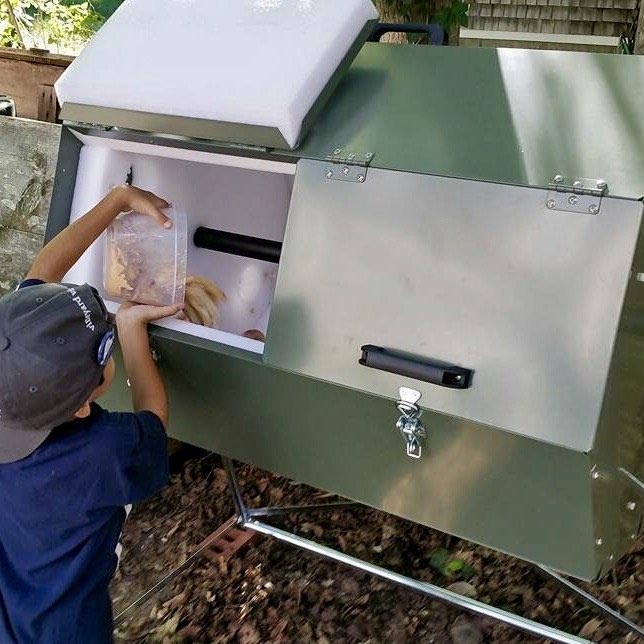
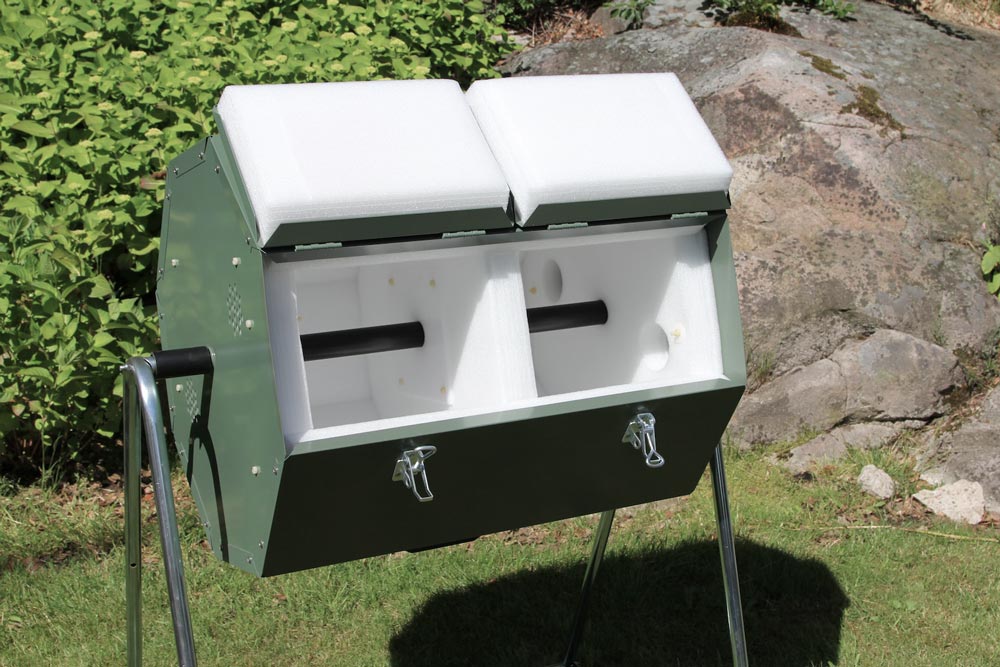
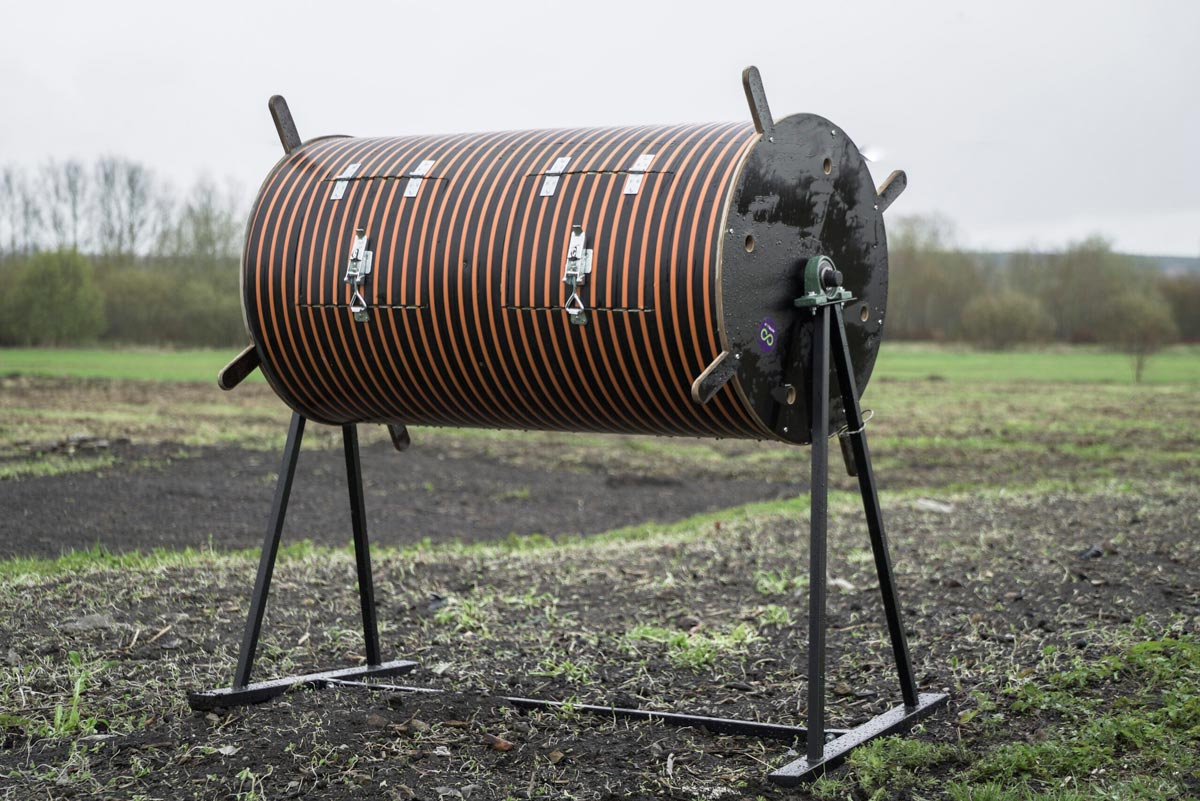
The drum composter is an efficient and relatively clean way to produce compost for the home garden.
Thank you for caring!
PS! If you make something cool from empty Vimergy jars, take a picture of it and be sure to share it with us – we’d love to see what you’ve made! Write to us or tag us on instagram @elusvali and we’ll be happy to share what you’ve made!
Sources used and further reading on re-use
- Kuhuvia – an interactive map to find out where to take things that have had their day in your area.
- https://www.joracomposters.com
- https://nutriloop.org/et/




 All products
All products
 Powders
Powders
 Capsules
Capsules
 Tinctures
Tinctures
 Kits
Kits
 Brain health
Brain health
 Immunity
Immunity
 Nails and skin
Nails and skin
 Eyes and joints
Eyes and joints
 Liver health
Liver health
 Body cleansing
Body cleansing
 Babies and mothers
Babies and mothers
 Dry goods
Dry goods
 Natural sugars
Natural sugars
 Spices
Spices
 Natural cleaning products
Natural cleaning products
 Drinks
Drinks
 Dried fruit
Dried fruit
 Herbal teas
Herbal teas



